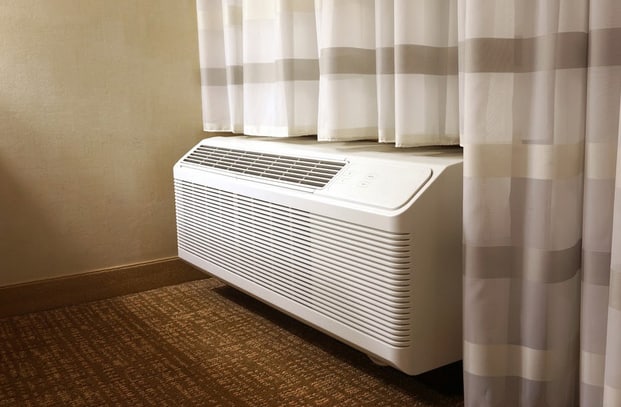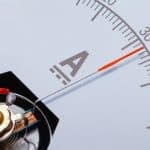To understand the difference between packaged terminal air conditioning units with resistance heating and those with heat pumps, you need to understand a little bit about how they cool.
To cool the air, PTACs use either traditional refrigerant or fresh air intake. They use an evaporator coil that faces the room to be cooled and a condensing coil, which faces the outside.
Using fresh air intake is comparable to opening a window. The PTAC pulls air directly from outside through the unit via a vent in the back. Some models also have a dehumidifier built in that removes moisture from the outside air.
The most common method, however, is recirculating inside air through a refrigerant, which is also the most efficient method. The refrigerant cools the coil, which removes the heat and humidity of the air. The air is then released through the unit through fans and a vent.
PTAC Heat Pumps Vs. Electric Heat

Resistive heat involves wires that heat up and a fan that blows air across them — like a hair dryer. Many PTACs use only resistive electric heat, but some also have a reverse cycle heat pump.
A heat pump works similarly to a window unit air conditioner, except in reverse. It blows hot air into the building and cold air out the back by using a valve that changes the flow of the freon in the unit. Heat pumps draw 25-75 percent less wattage than other electric heat units, making them more efficient.
In the past, the downside of a heat pump was that it took longer for the heat to really heat up a room. However, all modern PTAC units with heat pumps also have resistance heat. The resistance heat kicks on instantly and warms the room up quickly, then switches over to the heat pump to maintain the desired temperature.
Heat pumps work best when the outside temperature is above freezing. Once the temperature drops down into the 20s or lower, it’s too cold for a heat pump to work properly. At that point, the resistance heat will take over. A heat pump’s sweet spot is between 35-55 degrees F.
PTACs with heat pumps can be a little more expensive than those with just resistance heat. But, because heat pumps are so much more efficient, they save you money in the long run by reducing overall energy costs.





